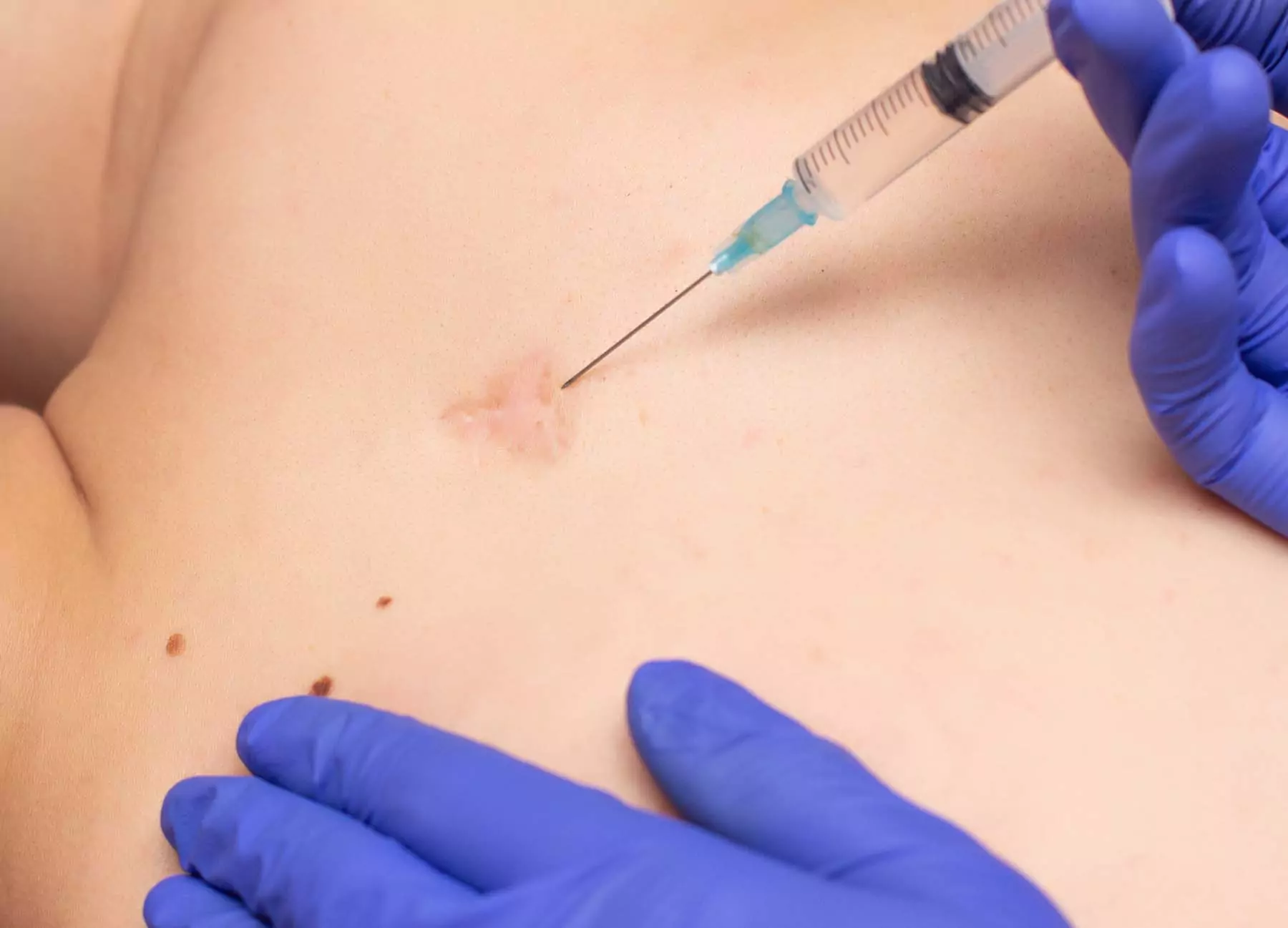Why Corticosteroid Therapy?
Corticosteroid therapy has been commonly used for years to treat hypertrophic and keloid scars. Corticosteroids suppress inflammation, reduce collagen synthesis and inhibit cell proliferation; itch and thickness of scars is reduced. Corticosteroids can be given through injection, steroid tape or topically (by cream). Intralesional injections (injections into the scar) are common treatments for linear scars, hypertrophic scars and small keloids. Other treatments alongside corticosteroid therapy are often required for large keloids and thick hypertrophic scars.
Intralesional Corticosteroid Injections
An intralesional steroid injection (ISI) involves the injection of a corticosteroid such as triamcinolone acetonide directly into the scar or immediately below the skin. Intralesional steroid injections can be given on their own or in combination with 5-Fuorouracil (5-FU) or Botulinum Toxin Type A. A recent systematic review suggests that the best results are seen when corticosteroid and Botulinum Toxin Type A are given together, followed by 5-FU. When ISI is given weekly after surgical excision (removal) of a keloid scar, reoccurrence rates (the chance of the keloid returning) is reduced. Recent studies show that the delivery of ISI with CO2 Fractional Laser treatments have promising results.
The recommended treatment interval for ISI varies from 2 to 5 weeks and until the scar is flattened. The most frequently reported side effects are skin atrophy, hypopigmentation (loss of colour) and telangiectasia (appearance of small blood vessels).
Steroid Tape
Steroid tape is tape containing fludroxycortide (medium-strength) or deprodone proprionate (high-strength). It is used as first line treatment for small keloids and hypertrophic scars, especially with children and the elderly. It can also be used post-radiation or post-excision (removal) of keloid scars. The steroid tape is applied by cutting the adhesive material to the size and shape of the scar, with minimal overlap onto the surrounding skin. You can shower as normal with the tape on, the tape is changed every 24–48 hours. Side effects are more likely with the higher concentrations of steroid tape. Reported side effects are: burning/stinging sensation, contact dermatitis (skin inflammation), skin irritation and folliculitis (inflammation of the hair follicles).
Steroid Cream
Topical application of corticosteroids is not common. Two studies reported good results with the use of a methyl prednosone cream on post-caesarian and pubic incision scars. Two other studies reported moderate to good results with laser assisted drug delivery of betamethasone and desoxymethasone ointments. However, the evidence for this type of corticosteroid application is low.



